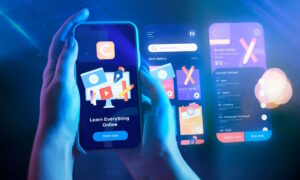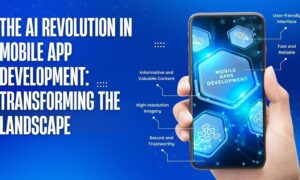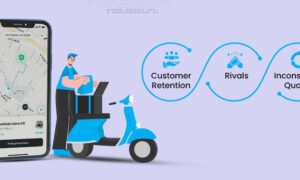Let’s start with a fundamental question. Is it necessary for a business to build a mobile app? Since the web presence has been overshadowed by mobility as the principal mode of digitizing a business, you can no longer undermine its importance.
But since there are already millions of them, how can you build an app that starts getting traction early? Be assured there is no mystery involved in this. You don’t need to invent a new process or method to build your first successful app. All you need is to follow the steps of other successful apps of your niche and category.
Let’s put this into a step-by-step guide.
Know your App Well
If you have just an app idea, you stand alongside millions who, with hundreds of unique ideas, just do nothing. So, don’t feel inflated with just a thought. You have to work on it. You must explore the concept and consider its relevance, usability, market, and monetization. Most importantly, it would help if you documented all these after figuring out everything. Look at the steps below.
- Ask if the idea is relevant in actual life scenarios and how much demand there is for the solution the app will offer.
- Think about how the users will use and interact with the app. For this, go deeper into the idea and think about how it should work.
- Now figure out who will be the ideal app users and their demographics, preferences, social-economic conditions, etc.
- Take a look around and find apps that are similar or at least closest to what you are offering.
Know Your Technology, Platform and Method
You have identified the app project and documented all its value propositions, relevance, interactions, target users, and competition. Now you have a solid app project to pursue. The next step is determining the development means, such as target OS platforms, technologies, methods, etc. And, of course, these need to be documented as well. Here below are the steps.
- You can opt for either native iOS, native Android, or cross-platform development. Do a bit of research on this.
- Based on what you choose, you have to decide on the tech stack. For native development, you have a well-established path, while for cross-platform development, you have many front-end choices like Flutter, React Native, Xamarin, etc.
- As for development methods, you can opt for Rapid App Development (RAD), Agile, Waterfall, etc. The choice of development methodology also depends upon several factors.
- Lastly, you should always go for Minimum Viable Product (MVP) development approach to reduce initial app development costs and build the app based on user feedback.
Decide on the Mobile App Development Resources
With the above two steps, you have already outlined the project and made a solid document with the app idea, target audience, market, related technology stack, development method, and platform choices. Now the obvious question is, who is going to build the app? So, you either need to hire an expert in-house or a remote team from a top mobile app development company in India.
Though in-house and remote hiring has pros and cons, some app projects find an in-house team more effective, while many find remote hiring more beneficial. To put it grossly, in-house hiring suits companies with an established development team, process, and highly ambitious and complex app projects. But remote hiring is always better for startups and small businesses trying to make their initial digital footprint with a mobile app.
The Power of Event Apps:
Event apps have become indispensable tools for event organizers, attendees, and participants. They provide a seamless and immersive experience, enhancing engagement and interaction. Whether it’s a conference, trade show, music festival, or corporate event, a well-designed event app can significantly enhance the overall experience and deliver value to both organizers and attendees.
Where to Find Quality Mobile App Development Resources?
Whether for in-house or remote hiring, you must reach out to potential developers or development candidates through various channels to build an app from scratch. Particularly when you opt for remote hiring, you have a world full of options and many hiring platforms and job boards. Here we list some credible places and sources to find quality developer resources.
- Social media channels, particularly LinkedIn, have an excellent reputation for allowing access to developer resources worldwide.
- Experienced and new developers also frequent traditional online job portals like Indeed, Glassdoor, etc.
- For hiring reputed development companies with the right teams, you can go to B2B rating sites like Clutch or Goodfirms.
- For finding experienced developers with project footprints, go to developer community platforms like GitHub and StackOverflow.
- Apart from all the above channels, you can do a Google search, consider peer reviews, participate in developer events, and check tech publications to find the right talents.
Technical Screening
When the initial screening of the portfolio and the development background is over, you need to get down to technical screening and check their actual development skills on a demo app project.
This will also help you evaluate how they collaborate with other team members and the practices and standards they follow. Remember, even with equal coding skills, and some developers excel because of these attributes.
Create Wireframe, Mock-up and Dynamic Prototype
First, you must create basic sketches of the app screens that we call wireframes. When these wireframes are finished, put design elements into them following the specific iOS and Android design guidelines and build a mock-up design.
With the mock-up design, you have concluded that the primary app design only needs interactive elements to behave like an app interface. Now by using prototyping tools, create a dynamic prototype that can be interacted with.
Ensure Iterative Development
Based on the dynamic prototype, now your developers will start developing the app’s core architecture, features, and functionalities. This development phase must accommodate iterations from the app owner or other stakeholders.
Any modern app follows Continuous Integration (CI) and Continuous Development (CD) approach to ensure frequent iterations and optimum output by detecting errors early and often.
Summing It Up
This is still a brief guide for mobile app development in 2023, but these steps stay relevant and irreplaceable for any app project. When you follow these steps diligently, and with an uncompromising focus on building your app success story over time instead of going all out simultaneously, your app is destined to succeed.




































